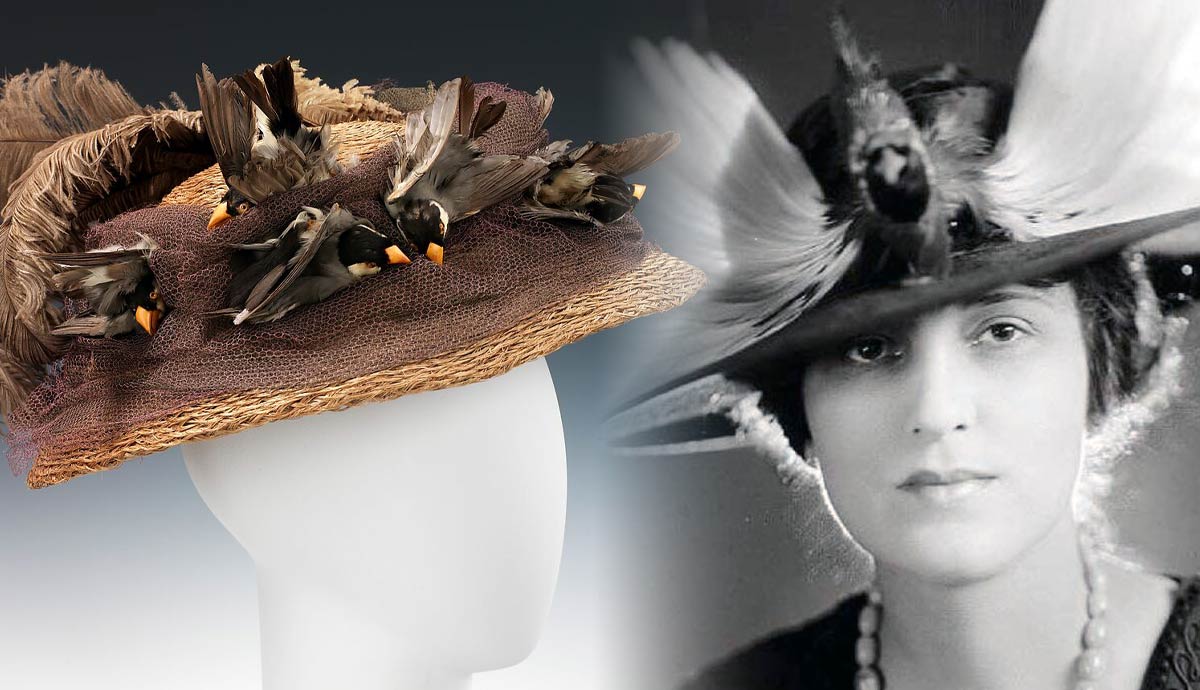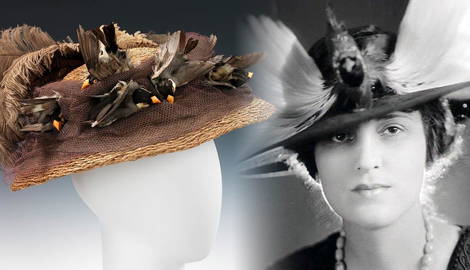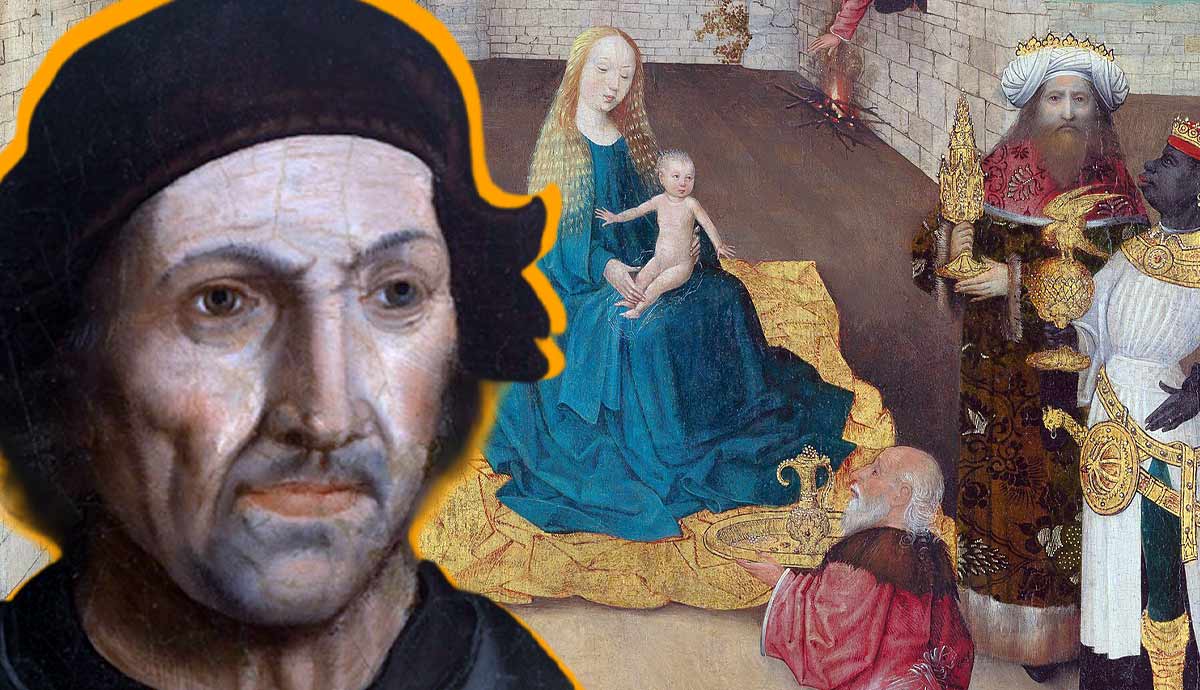
One of the most popular and available accessories, feathers have been used for thousands of years as both single statement pieces and parts of more elaborate garments. The native South and North Americans have used feathers to create ritual headdresses. In Europe, Marie Antoinette famously wore huge ostrich feathers mounted on her powdered wigs. The Victorian age saw a radical and sharp increase in demand for feathers. One of the reasons for that was the colonization of previously unseen territories.
Victorian Age: The Rise of Overconsumption and Absurd Trends

The brilliant feathers of unfamiliar hues soon turned into precious specimens for ornithologists and the most desired accessories for trendsetters. The Victorian feather craze was perhaps one of the wildest and most absurd cases in the history of Western fashion. The Victorian era also gave rise to fast fashion and rapidly changing trends as we know them. Industrialization facilitated production and distribution chains and led to the expansion of ladies’ closets.
Ideally, a Victorian woman was supposed to own different sets of clothing for breakfast, tea, dinner, church, shopping, and every other occasion. Of course, this was hardly affordable for the majority of Victorian women. To create the impression of an extensive wardrobe, they used accessories. A hat was an absolute necessity, both for the matters of respectability and for making an aesthetic statement.
As bird specimens flooded Europe, the millinery masters saw new opportunities to expand their businesses. Instead of boring pheasant feathers, they could now offer a wide array of birds, many of them imported from overseas. From curiosity cabinets and ornithologists’ glass cases, birds soon moved to window displays, turning into the ultimate status symbols. With the influx of exotic feathers on the market, Victorian milliners soon moved from decorating their hats with a few bright feathers to mounting entire bird skins onto them. The bird had to look as lively and active as possible, thus the dead being had glass eyes and often widely stretched wings.

Soon, the feather craze reached its peak. In 1886, one of American ornithologists counted seven hundred women wearing feathered hats during his walk through Upper Manhattan. More than five hundred of them wore entire bird skins on their heads, all exotic and rare. Apart from hats, other garments continued the feather trend, often to an absolutely horrifying extent. Merchants sold entire floor-length cloaks made out of thousands of bird skins sewn together.
Egrets, herons, parrots, and quetzals were slaughtered in millions to support the ever-growing demand. American ornithologists complained that because of the skyrocketing prices they could not afford to buy bird specimens anymore. Abroad, dead birds were stripped of their precious feathers and left to decay, poisoning the land, while their nestlings died of starvation. Yet, it would take more than three decades for the authorities to implement at least some measures.
Fly-Tying: The Male Equivalent of the Feather Craze

While women preoccupied themselves with the latest fashions, Victorian men also found themselves a hobby to go along with the feather trend. The Victorian era saw the rise of fishing as a recreational hobby for the wealthy rather than a life-saving necessity. The affluent and respectable gentlemen spent their weekends on private lakes cordoned off from the rest of the public, turning a seemingly peaceful hobby into a ruthless competition.
Apart from the fishing itself, they reinvented the ancient practice of fly-tying—crafting artificial flies from natural materials to use them as bait for salmon and trout. However, in a competitive environment of affluent Victorian gentlemen, fly-tying soon became an art form. To impress their fellow fishermen, they crafted ties from exotic bird feathers and polar bear fur, constructing complex and multi-colored compositions from hundreds of feathers. Many of them published elaborate treatises on the necessity of using genuine imported materials to fool the trained eye of a salmon. Obviously, salmon was not as fastidious as they would like it to be, yet the fly-tying hobby went too far to rely on common sense.

Hundreds of thousands of people were employed in the feather-producing sector, soon arranging separate work unions for merchants, dyers, and even children exploited by the industry. Equally rapid and mind-boggling was the scale of destruction caused by the newly emerged market. By the 1900s, two hundred million birds were killed for feather trade in North America only. The populations declined rapidly, yet, for a while, the decline only affected the feather prices which grew day by day.
The religiously inclined mind of an average Victorian could not fathom the concept of species extinction due to human activity. After all, the existence of all creatures, both men and birds, relied on God’s will, and God would definitely not allow anything to happen to them. Yet, the abnormal demand for exotic feathers and bird skins soon proved that the creative force of the divine power could not catch up with the destructive potential of humankind.
The Anti-Feather Movement

Ever since the rise of the feather trend, there were people who actively opposed it. In 1875, Harper’s Bazaar magazine published an article condemning the casual cruelty of women choosing fashion trends over Christian humility and inflicting pain and suffering on poor creatures. The suffragists joined in—they saw expensive and complex fashions as a way for society to distract women from self-improvement and intellectual development.
Since 1889, British activists founded several groups and societies dedicated to the protection of birds and the limitations of the feather trade. The members of communities like The Plumage League or The Royal Society for the Protection of Birds consisted entirely of women who refused to wear feathers and actively encouraged others to do so. They attended dinners and tea parties to tell other guests about the inhumane nature of the feather industry with a focus on the immediate danger to wildlife. As it turned out, many ladies had been convinced that the mass-scale feather trade relied on feathers molten naturally, without any harm to the birds. Others insisted there was nothing wrong with killing animals since humanity had to establish its dominance over nature.
The End of Victorian Age’s Feather Craze

Noticing the shifting trend, the press joined in, soon starting to publish caricatures of women covered with dead birds head to toe, calling them the real birds of prey. However, present-day historians pinpoint it as the case of commonly spread misogyny: although the industry was male-dominated, women as the target audience of the trade became the scapegoats. The same magazines that previously promoted feathered fashions started to publish photographs of birds slaughtered and skinned. Yet, the feather traders fought back, insisting that a ban on their business would result in thousands of people losing their jobs, subsequently damaging the global economy.
Finally, the activists’ efforts paid off. By the end of the 1910s, both the United States and Great Britain passed laws banning the import of foreign feathers and hunting of endangered species on their territories. Still, over a century later, some of the birds that were used for feathers like the 45 existing species of Birds-of-Paradise remain endangered. Although the feather craze is long gone, humanity continues to ruin the birds’ natural habitat through pollution and deforestation.

So, how did such an absurdly massive and dangerous fashion trend come to its end? Did it simply go out of style, or was it abandoned by the next generation, or were there some other forces at play? Thanks to the efforts of women activists and the press, a woman dressed in feathers soon became a stereotypical image of an old-fashioned, cruel, and irresponsible person. Yet, as fashion historians note, the final blow to the great feather craze came not from developing social responsibility but from technological advancement. The newly invented automobile left no room for voluminous headdresses, which soon were replaced by tight-fitting cloche hats.
Furthermore, the rise of public cinema made wearing a large feathered hat possibly the worst crime you could commit against your fellow moviegoers. Fashion transitioned into a period of practicality and liberalism, particularly with the increasing participation of women in the workforce. The devastating impact of World War I and wartime austerity left little room for lavish fashions and turned excessive demonstration of wealth into obscenity.










